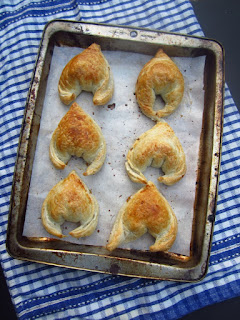I want to start by saying baking is NOT my strong point. I
made a ruby inspired pavlova, mostly with the intention of playing around with meringue
and egg whites. There are as many recipes and secrets to the perfect pavlova as
there are pavlovas made daily, so it is purely a matter of trial and error
until you find the right mix. Pavlova has been a big part of my dessert life up
until now; Christmas, birthdays, Easter, and mostly just because.
I concentrated on the stiffening of the egg whites with sugar;
there were so many methods to this sugary madness so I’m going to play until I
find the perfect method and ingredient ratio. My pav started beautifully rising
in the oven, cooked in a spring tin (my mixture was a little too fluid), then
fell a little. What I learnt from my first attempt was the following;
1.
Egg whites need to be
relatively stiff before adding the sugar incrementally. You can possibly over
beat them if you beat the sugar into the mixture too late or early.
2.
The meringue mixture
should not be grainy when you rub between your fingers, to test
3.
Eggs should be at room
temperature, with NO traces of yolk; the slightest trace of fat will throw off
the stiffening process.
4.
Make sure you clean all
utensils (bowl and beater) with hot water, removing all residual grease,
cleaning with a paper cloth or towel.
5.
You need to find a
supreme ratio between egg whites, vinegar, sugar and cornflour, so many
variations!
6.
Cook for 1.5 to 2 hours
at 120 degrees Celsius and leave to sit in oven with the door open for at least
30 minutes before removing or decorating.
7.
Caster sugar is NOT the
same as labelled white sugar – I had a very, very stupid moment.
Ingredients
Serves 6 – 8
6 egg whites
1.5 cups caster sugar
3 tbsp cornflour
1 tsp white vinegar
½ tsp vanilla extract
Marty’s Topping
1 cup thickened cream,
whipped
1 punnet strawberries
½ small pomegranate
1 passionfruit
3 tsp good quality
honey
Directions
Start preheating the oven at 120
degrees C/ 248 degrees F. Separate egg whites into a clean mixing bowl. Start
by beating on a medium speed, until soft peaks have formed. Once you have done
so, start adding sugar incrementally, continually blending until stiff peaks
form, changing the speed from medium to medium high. You should be able to tip
the blow above you r head without the mixture falling. Be careful not to over beat
the mixture; the meringue will collapse. Fold in cornflour, vinegar and vanilla
extract with a plastic folding cake spatula.
Place on a baking tray, lined with
baking paper, at a diameter of 20 cm. I had used a baking tray with sprayed
sides. The fat from the oil had obviously affected the meringue as it fell
slightly. Concentrate on forming a stiff meringue mixture to avoid having to
use a spring tin.
While the pavlova is baking, whip cream
and set aside. After the pavlova has cooked and hardened nicely all over, let
it sit in the oven to dry out with the door open. Dress the pavlova by spreading the whipped
cream, placing strawberries within the centre. With a wooden spoon, hit the
back of the pomegranate to remove seeds without breaking them. Do so into a
bowl and spoon nicely all over. Finish with passionfruit and make thin circles
around the cake with honey, creating a nest effect.

























